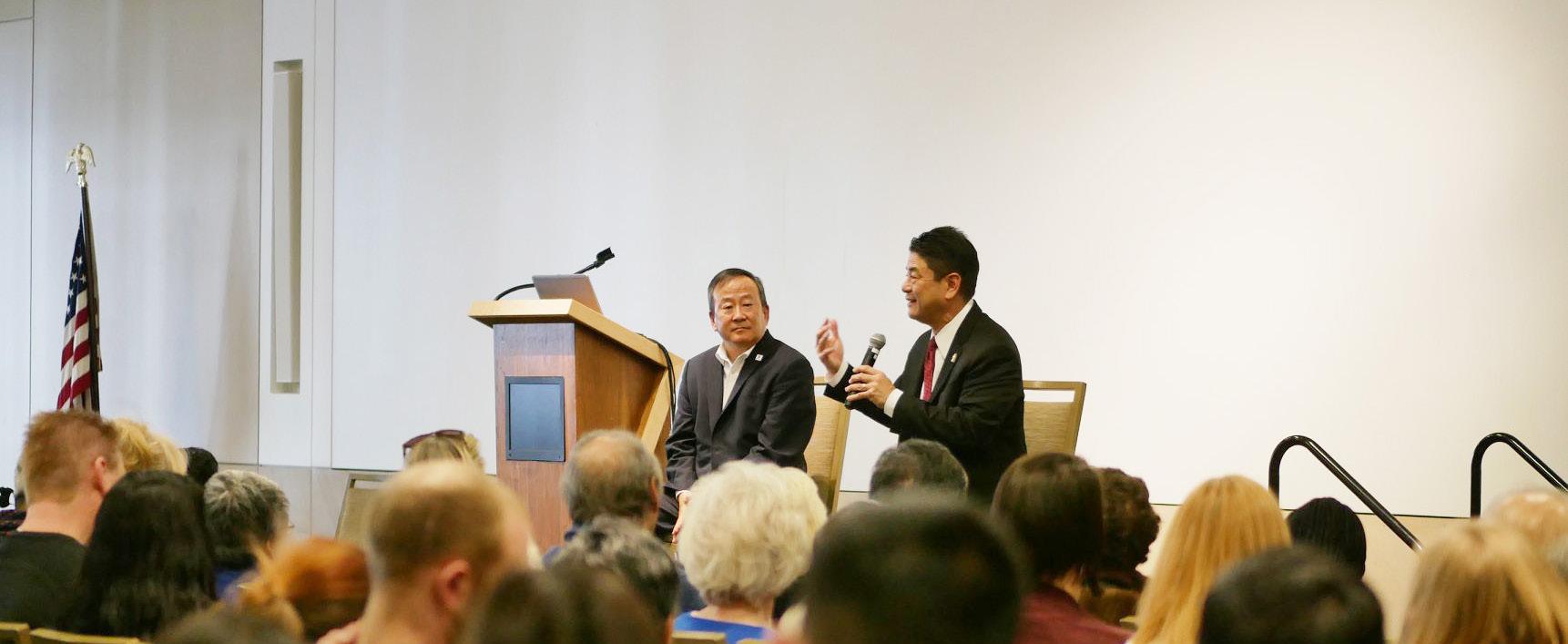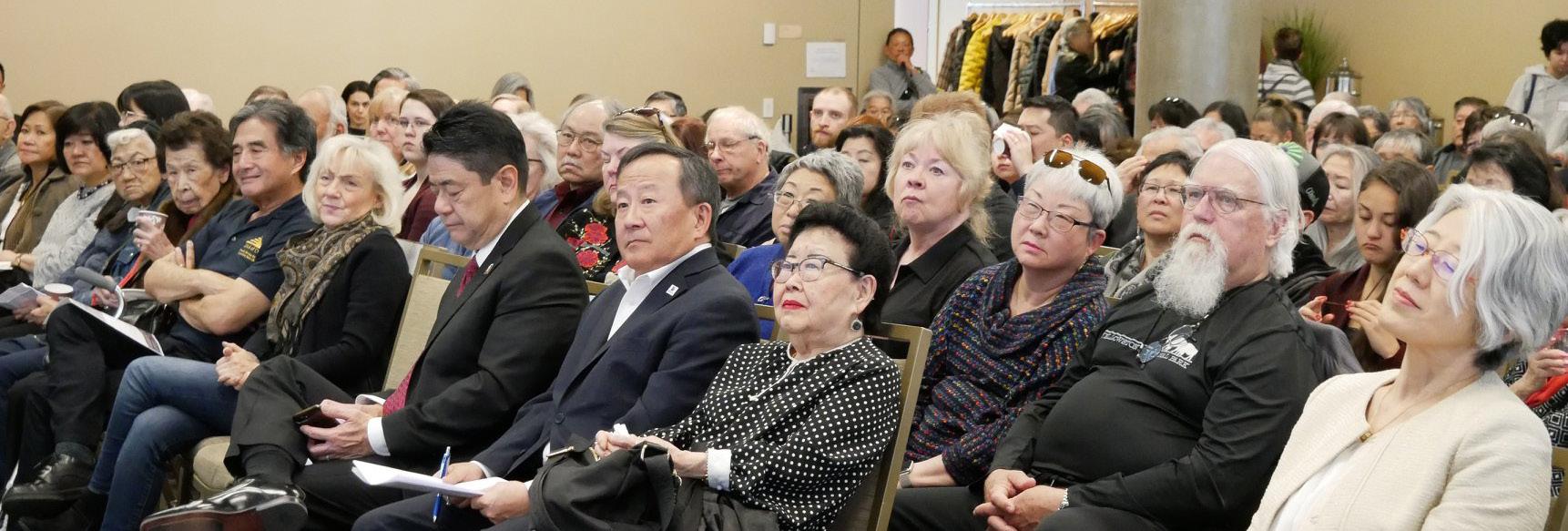Fear fuels the fires of prejudice: Let’s talk about the coronavirus
The coronavirus outbreak that started in Wuhan, China has become a worldwide crisis, and the virus is serious business – both figuratively and literally.
Because the world economy is interlinked and interdependent, a disaster in Asia can have ripple effects across the globe’s financial markets. As countries including the United States cut back travel to China and block people from coming from China, the US stock market’s been battered by the effects of the coronavirus. Many American companies have offices in China and rely on companies there to keep its supply chains moving.
And now, it appears that the world is on the brink of a coronavirus pandemic.
As I write this (Feb. 25), the virus named COVID-19, has infected more than 80,000 people in 37 countries, causing at least 2,600 deaths. It causes symptoms similar to flu or pneumonia. The US Centers for Disease Control and Prevention so far has confirmed 57 cases in the US, and announced that it’s not a question of if the virus will spread widely to the US, but when.
We can’t fault countries, including the US (and Japan) from limiting or blocking travelers from China. Until there’s a scientific medical solution to treat and prevent the virus, one way to control the spread is, well, to control the spread of the people who may be carrying the virus.
Unfortunately, along with the spread of the virus, one side effect has been the spread of fear that can fuel the fires of prejudice. It’s one thing to be afraid of people from Wuhan, or even mainland China, who may have been exposed to the virus. It’s another altogether, to treat Chinese in the US, including Chinese Americans who were born and raised here and haven’t gone to Wuhan or even to China recently, as pariahs who might be carrying the illness.
They’re not. Neither are other Asian Americans and Pacific Islanders.
And yet, the media have run stories about how AAPIs are being treated as if they’re all Chinese who are “fresh off the boat” from Wuhan. The New York Times ran a commentary about how Chinese restaurants are being subjected to outdated tropes – fake stereotypes – about serving meat that might have been the cause of the virus in the market in Wuhan. You know, rats, bats, wolves.
Someone posted fake comments on the Facebook page of a Denver-area Chinese restaurant that claimed he felt sick after eating there, and wondered if he got coronavirus. Facebook removed the comments and the user.
The mayor of Philadelphia dined at a restaurant in the city’s excellent Chinatown district last month to show support for the Chinese American community. I hope other cities’ mayors and celebrities do the same. Some other mayors of American cities have gone to their Chinese communities to calm citizens’ concerns.
Here in Denver, Mayor Michael B. Hancock has released a statement of support for the area’s Chinese and Asian Americans:
‘We stand with and support Denver’s thriving Asian community, today and every day.
“In Denver, we will not tolerate discrimination of any kind. Since the Coronavirus outbreak there have been local and national sentiments and actions against our Chinese and Asian communities by people who inaccurately equate an entire race with a disease.
“We must stand up against racism, fearmongering, and misinformation by supporting and embracing all residents who call Denver home. I encourage to continue supporting your neighbors and their businesses today and always. Our differences are what unite us.”
It’s always easy to target “the other” in times of crisis when fear is clouding our societal judgment.
AAPIs have felt this prejudice by just sitting down at a café, or a station, or a library, only to have people around them pick up their things and move away. Do we need to shout out, “I’m not Chinese from Wuhan!” or “I’m Japanese American!” to show we’re not Typhoid Mariko?
This is reminiscent of the WWII-era photographs Asians with signs pinned to their clothes reading, “I am Chinese.” It was a common sight to see Chinese Americans identifying themselves during the war, when 120,000 people of Japanese ancestry including half of whom who were USborn American citizens, were imprisoned in US concentration camps.
If you’re “The Other,” and you so much as look Asian or serve any kind of Chinese food, you could have been singled out as a spy during WWII, or as a virus carrier today. Let’s let the authorities fight the coronavirus with science, and not bring our baser instincts of fear and loathing to the surface. Gil Asakawa is a member of the Denver Asian American Pacific Islander Commission. DAAPIC Column
Fear fuels the fires of
By Gil Asakawa During WWII, Chinese Americans wore signs to identify themselves in order to avoid being sent to Japanese concentration camps. Credit: Ranker.com prejudice We stand with and support Denver’s thriving Asian community, today and every day.
In Denver, we will not tolerate discrimination of any kind. Since the Coronavirus outbreak there have been local and national sentiments and actions against our Chinese and Asian communities by people who inaccurately equate an entire race with a disease.
- DENVER MAYOR MICHAEL B. HANCOCK
Annual event makes sure Americans never forget the JA incarceration

Article and Photos by Gil Asakawa



The Mile High chapter of the Japanese American Citizens League (JACL) hosts an annual Day of Remembrance event to mark the anniversary of a dark chapter in US history: The incarceration of 120,000 people of Japanese descent during World War II in American concentration camps.
This year’s Day of Remembrance was held in the large conference room of History Colorado Center, where about 250 people gathered to hear keynote speaker Mitch Maki explain the role that the Nisei, or second generation Japanese Americans of the Military Intelligence Service, or MIS, played during the war in the Pacific and the post-war Occupation of Japan. Maki, a stellar storyteller and president of the Go For Broke National Education Center, a museum and archive dedicated to the “Go for Broke” spirit of the Nisei soldiers of WWII.
On Feb. 19, 1942, less than three months after the bombing of Pearl Harbor, President Franklin Roosevelt signed Executive Order 9066, which allowed the US military to designate “military exclusion zones” along the West Coast, and within a few months uproot Japanese immigrants (the Issei) and their US-born American citizen children (the Nisei) from their homes, businesses, farms and properties. They were imprisoned first in temporary detention centers in converted horse racetracks and other large public facilities, then in 10 hastily-constructed from inland California to Arkansas, with one – Amache – located in southeast Colorado next to the town of Granada. More than 7,500 people lived in Amache. Even though their families were incarcerated during the war, thousands of Nisei joined the US military when they were allowed as the war went on. Many served in Europe as part of the 100th Battalion/442nd Regimental Combat Team, which earned stateside headlines for their valor and remain to this day the most highly decorated combat group in the history of the US military. Fewer served in the Military Intelligence Service (MIS). They were recruited for the MIS because they spoke Japanese, and were sent to the Pacific where they fought their way alongside General Douglas MacArthur. The MIS provided translations of captured Japanese documents and helped interrogate captured enemy soldiers. Many also served in the Occupation of Japan, and as Maki noted in his talk, helped serve as a bridge between the US occupiers and the Japanese. Maki credits the MIS veterans for helping to build the close relationship that Japan and the US enjoy today. These Nisei soldiers were not famous like the “Go For Broke” 442nd, and as veterans, they never spoke about their experience for decades after the war. This year’s Day of Remembrance paid homage to these soldiers.
At the event, the National Parks Service surveyed people about the potential to gain a national park designation for the Amache site. The program was made possible by grants from the Simpson United Methodist Church, Tri-State Denver Buddhist Temple, Nisei Veterans Association and Sakura Foundation, and co-sponsors the Japanese American Resource Center of Colorado and History Colorado Center.
















